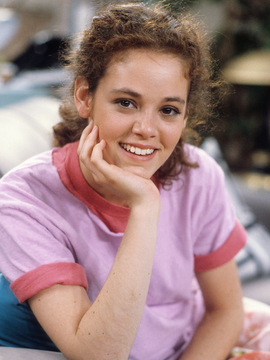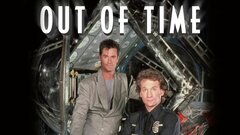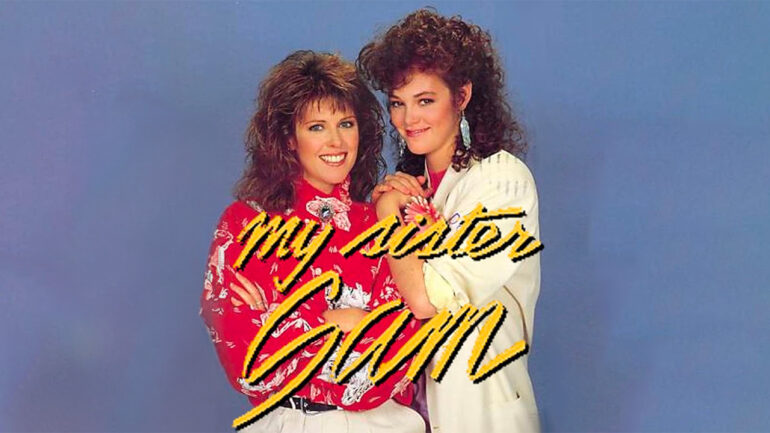Rebecca Schaeffer

Actress
Birth Date: November 6, 1967
Death Date: July 18, 1989
Birth Place: Eugene, Oregon
In the mid to late 1980s, beautiful Rebecca Schaeffer - with her big brown eyes, curly brunette mane and megawatt smile - was an ambitious and promising young actress making her way in Hollywood. At the age of 19, she won the breakthrough role of her short career, starring in the television sitcom "My Sister Sam" (CBS 1986-88) as Pam Dawber's adorable, smart-mouthed younger sister. Even after the show was cancelled two years later, it seemed that the rising young starlet would have her pick of roles to look forward to. On the final day of her life, she was prepping to audition for none other than Francis Ford Coppola, for a role in his long awaited "The Godfather III" (1990). Tragically, her life was cut short by a homicidal fan before she realized her potential and was remembered less for being the promising young actress that she was; and more as a cautionary tale of the real life dangers of delusional celebrity stalkers.
Rebecca Lucille Schaeffer was born Nov. 6, 1967 in Portland, OR, the only child of Benson Schaeffer, a psychologist, and his wife, Danna, a writer. Born with a natural ambitious streak and young Rebecca began modeling at the age of 14. She was a good student and active member of her community synagogue, until she dropped out of high school at the age of 16 to move to New York on her own to pursue modeling and acting. A terrifying move for her parents to be sure, but Schaeffer was focused and mature for her age. The fearless teen soon landed on the cover of Seventeen magazine, looking innocent and fresh faced. In 1985, she even landed a short stint on the daytime soap opera "One Life to Live" (ABC 1968- ). A year later, Schaeffer returned to her NYC apartment to life altering news. She was too broke to afford a phone, so her agent had taped a note to her front door informing her that Warner Brothers had invited her to Los Angeles to audition for their new family-friendly sitcom, "My Sister Sam."
After winning the part, Schaeffer left New York behind for sunny Los Angeles. Settling into her new life easily, the independent Schaeffer once again lived alone in an apartment in a quiet Los Angeles neighborhood known as the Fairfax District. The neophyte was well liked by her colleagues and handled her new acting gig alongside her more experienced co-workers with confidence and grace. At the same time she was charming America as Dawber's little sister, Patti Russell, Woody Allen noticed her and bestowed Schaeffer with a small part in his 1987 feature film, "Radio Days" as "The Communist's Daughter." After editing, her small part was reduced to miniscule, but nonetheless, she had a Woody Allen film on her resume. Schaeffer's next role was also small but still a stepping stone. She played Jacqueline Bisset's precocious daughter in the satirical feature film about the rich and spoiled inhabitants of Beverly Hills in the critically panned, "Scenes from the Class Struggle in Beverly Hills" (1989). Though the role probably seemed innocuous at the time, it triggered a sequence of final events in the mind of a lunatic that no one could have possibly predicted.
Unlike the effervescent actress, Robert John Bardo - a resident of Tucson, AZ - was a loner with little to look forward to in life. Despite having good grades, he had dropped out of high school after his freshman year, much to the relief to his teachers, since he was known to write them threatening letters. In the fall of 1986, Bardo's schedule consisted of just two things: working as a janitor at a Jack-in-the-Box fast food restaurant and obsessing over Schaeffer, whom he had recently discovered by catching an episode of "My Sister Sam." His bedroom in his parents' home soon became a shrine to the actress, cluttered with Schaeffer's posters, a cache of un-mailed letters written to her, as well as tapes of most of the episodes of "My Sister Sam." Police would later learn that because the show had been cancelled in 1988, the tapes were his only way of keeping up with his object of desire. They would also learn that the fatal visit in 1989 was not the first time the obsessive young man had reached out to Schaeffer.
Like millions of fans, Bardo started to write letters to her. Schaeffer responded, writing that his letter was "the most beautiful" that she had ever received. On her letter, she drew a peace sign, a heart, and signed it: "With love from Rebecca." The day Bardo received the letter he wrote in his diary: "When I think of her, I would like to become famous to impress her." In June of 1987, Bardo amped up his pursuit by traveling to L.A. to meet Schaeffer. He arrived at Warner Brothers Studios where "My Sister Sam" was filmed, carrying a teddy bear and a bouquet of roses. The guards turned him away. He showed up a month later - this time, bringing a knife - but was turned away again. Each failure to reach his target intensified Bardo's determination and anger. The guard at Warner Brothers informed him that he would never get to meet Schaeffer at the Warner Brothers lot, and that was THAT. To be on the safe side, the studio guard then informed Schaeffer's publicist about Bardo's visits. Unfortunately, they all agreed that the strange young man was harmless.
Two years later, Bardo asked his older brother to buy him a gun. Though Arizona gun laws were extremely lenient, one still had to be 21 years of age to purchase one. His brother complied. Armed with his new weapon, Bardo then enlisted the services of a local Tucson detective agency to track down Schaeffer's home address. Paying the detective $250, Bardo had no idea at the time that he could have gotten the address himself by paying $1 and filling out a simple form at the DMV - a practice that would soon change in light of the tragic events that were soon to follow.
On July 17, 1989, Bardo - armed with a gun, Schaeffer's address, her photo, a list of how he would kill her, and a copy of seemingly every celebrity stalker's Bible, J. D. Salinger's Catcher in the Rye - Bardo boarded a bus to Los Angeles. He arrived the morning of the 18th, wearing a yellow polo shirt. When he located Schaeffer's apartment at 120 North Sweetzer Ave. - a modest, quiet neighborhood in West Hollywood - he became dismayed by what he saw. Like many L.A. apartments, the Tudor style building appeared more like a house than an apartment. Bardo began showing passersby Schaeffer's photo, asking if they knew where she lived. He was overheard asking a taxi driver if the building was a house or an apartment. Finally convinced that he had the right place, Bardo rang Schaeffer's buzzer. In a cruel twist of fate, the intercom was broken at that time, requiring Schaeffer to come downstairs to the lobby door. She has been preparing for her audition for Coppola's "Godfather III" and was expecting a script that morning, only to find Bardo on her front porch. Hurriedly, she gave him an autograph before retreating back into her apartment. Her abruptness apparently reinforced Bardo's belief that she was a cold individual. Bardo left, going to a nearby restaurant for breakfast before calling his sister in Tennessee to inform her that he was going back to visit Schaeffer again. At approximately 10:15 AM, Bardo returned to Schaeffer's apartment building. This time, when Schaeffer came downstairs wearing only a bathrobe, Bardo pulled the gun out of his paper bag and shot the young actress once point blank in the chest. She was pronounced dead a half an hour later at Cedars-Sinai Medical Center. Her last words screamed out at her killer were "Why?" She was just 21 years old.
The following day, Bardo was arrested in Tucson, after motorists reported seeing a man darting through traffic on Interstate 10. The killer confessed immediately to the murder. Bardo was tried and convicted by prosecutor Marcia Clark, who later became famous for her role in the 1995 O.J. Simpson criminal trial. Convicted of capital murder in a non-jury courtroom, Bardo was sentenced to life without the possibility of parole on Dec. 20, 1991.
Overnight, the story of the relatively unknown starlet, murdered so callously on her front porch - in a crime that reminded many of the murder of Beatle John Lennon - transfixed the country. The cast of "My Sister Sam" - particularly her onscreen sister, Dawber, who - along with the rest of the cast and her real-life husband, actor Mark Harmon - would soon shoot a PSA in memory of her friend, warning of the easy availability of firearms. As more and more details of the avoidable tragedy surfaced, it became clear that Bardo had dark plans in store for Schaeffer for more than three years, but what had finally caused him to snap was catching a screening of "Scenes from the Class Struggle in Beverly Hills" (1989). In the film, Schaeffer's character, Zandra Lipkin, was shown in bed with co-star Ray Sharkey. In the dark, twisted recesses of Bardo's mind, Schaeffer had betrayed him. She was no longer innocent and therefore she had to be punished. Schaeffer's last film - the aptly titled feature "The End of Innocence" - was released posthumously in 1990. Written, directed and starring Diane Cannon, Schaeffer starred as the young version of Cannon's character, Stephanie. And the posthumously aired telefilm "Voyage of Terror: The Achille Lauro Affair" (syndicated, 1990), in which she played a supporting role, was dedicated to her.
One of the many people whose life was forever altered by Schaeffer's murder was her boyfriend at the time of her death, a young filmmaker named Brad Silberling. The couple had met on a blind date at the screening of Silberling's UCLA film thesis when he was 23 and Schaeffer was 19. After her sudden death, Silberling began working on the screenplay for "Moonlight Mile" (2002) off and on for years. The screenplay was a fictional re-telling of the aftermath of the murder and the journey of loss that Silberling took with Schaeffer's parents during the murder trial. In 2002, Silberling's labor of love was finally released on the big screen and received mostly positive reviews. "Moonlight Mile" managed to attract an all-star cast that included Dustin Hoffman, Susan Sarandon and Jake Gyllenhaal - all of whom believed in the project enough to work for scale.
If anything positive came out of such a senseless murder, it was the institution of new anti-stalking laws. Police agencies finally began to view stalkers as dangerous threats rather than a simple nuisance - especially as it pertained to celebrity stalkers. Soon after Schaeffer's murder, then California Governor George Deukmejian signed a bill prohibiting the DMV from releasing personal information. The Los Angeles Police Department also formed the Threat Management Team to deal with stalking crimes. In 1990, California passed the first anti-stalking law. By 1993, all states, as well as Canada, had anti-stalking laws in effect - and all due to Robert Bardo's crime that, not only took a young life, but shocked Hollywood and the rest of the country into a new, painful reality.
Credits

Voyage of Terror: The Achille Lauro Affair

The End of Innocence

Scenes From the Class Struggle in Beverly Hills

Out of TimeStream

My Sister Sam






